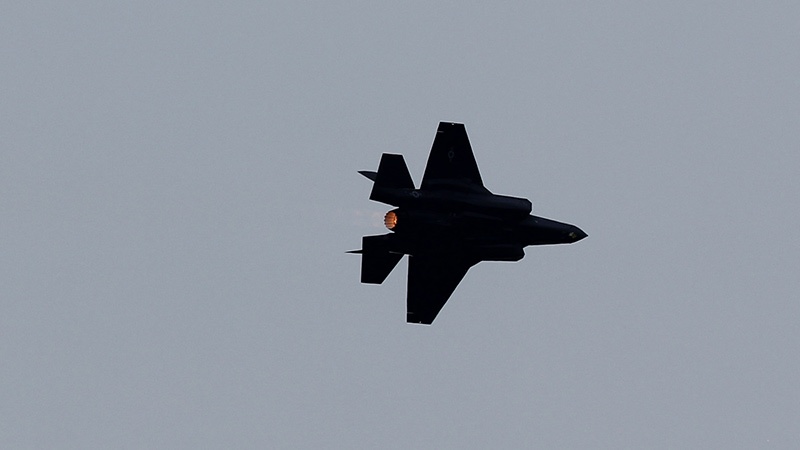Stay Up to Date
Submit your email address to receive the latest industry and Aerospace America news.
Paris Air Show
PARIS — The F-35’s unofficial moniker as the most expensive plane ever built for the Pentagon made this week’s flights at the Paris Air Show especially critical for those seeking to drive down the plane’s $85 million unit cost through sales to allies.
Lockheed Martin test pilot Billie Flynn wowed spectators with the stealthy F-35A’s still impressive thrust and low-speed maneuverability in the first air show demonstration of its full flight ability.
A few hours before its first flight at the Paris Air Show on Monday, the company’s general manager for the program, Jeff Babione, told reporters that Lockheed Martin is on the verge of a deal that could be worth up to $40 billion to build 440 F-35s for the U.S. military and 10 allied nations over several years.
“This more than doubles the total amount of airplanes under contract, and that we’ll be building,” Babione said during the press conference, adding that increased sales could help decrease the price of the jet into “the $80 million range.”
When asked whether President Donald Trump’s criticism of the program’s cost had any impact, Babione said Trump’s comments “accelerated” Lockheed’s plan to cut costs.
Flynn flew the F-35A at Le Bourget Airport, displaying the more than 40,000 pounds of thrust of the plane’s single Pratt & Whitney F135 engine by climbing vertically into the sky at maximum afterburner before maneuvering into a 360-degree turn. A signature move of the flight was a spiral at a 50-degree angle of attack, known as a pedal turn. Only fifth-generation fighters, meaning the F-35 and the F-22 Raptor, also built by Lockheed Martin, can perform such abrupt turns to high angle of attack, according to the company.
The F-35A flew with a full tank of fuel to simulate how it could maneuver during combat, as opposed to other air show demonstrations where a jet might be flown with only a few minutes worth of fuel to keep it lighter and more maneuverable.
Even so, the F-35A’s capabilities must be kept in perspective. Its biggest selling point is its radar stealth, which can’t be demonstrated at an air show. The F-22 Raptor remains more maneuverable, and the F-35 was not intended to outmatch it on that score, says Richard Aboulafia, vice president of analysis at the Teal Group aerospace research firm in Virginia. Another challenge of selling the plane based only on its air show performance is that its fifth-generation sensors and battlefield imaging are among its best features.
Lockheed aims to produce at least 3,150 F-35 planes through 2039, but “if they want to make that production ramp it depends on international demand,” in the event U.S. defense procurement remains flat, Aboulafia says. The challenge with selling such an advanced jet, however, is that Lockheed’s sales could be limited by U.S. national security concerns. Some nations are cleared to buy F-16s but might not be allowed to buy F-35s for a few years because it could endanger the air superiority of the U.S. and its allies, he notes.
“The United Arab Emirates is the perfect example,” Aboulafia says. He predicts Israel could get priority access to the fifth-generation stealth fighter.
The Pentagon also intended the F-35’s appearance to send a political message in Europe. Trump has criticized NATO as “obsolete” and accused other members of not spending enough on defense. The F-35 delegation took the opportunity to smooth over relations with the European nations who it aims to make customers for the fifth-generation jet.
“Make no mistake, the F-35’s participation in the Paris Air Show is a clear signal of our support to our NATO allies and coalition partners,” said U.S. Air Force Col. Todd Canterbury of the Air Force F-35 Integration Office in a press conference on Monday. “We need the F-35 because it is essential to our mutual national interests.”
The health of F-35 pilots was on the minds of those at the air show this week, as test pilots at Luke Air Force Base in Arizona experienced symptoms of hypoxia, also known as oxygen deprivation. The F-35A began flying again at Luke on Wednesday after being grounded since June 9. The pilots were given altitude restrictions, because the cause of hypoxia during those flights is not yet known, Canterbury said.
About Tom Risen
As our staff reporter from 2017-2018, Tom covered breaking news and wrote features. He has reported for U.S. News & World Report, Slate and Atlantic Media.
Related Posts
Stay Up to Date
Submit your email address to receive the latest industry and Aerospace America news.




